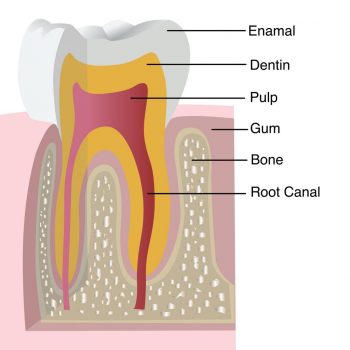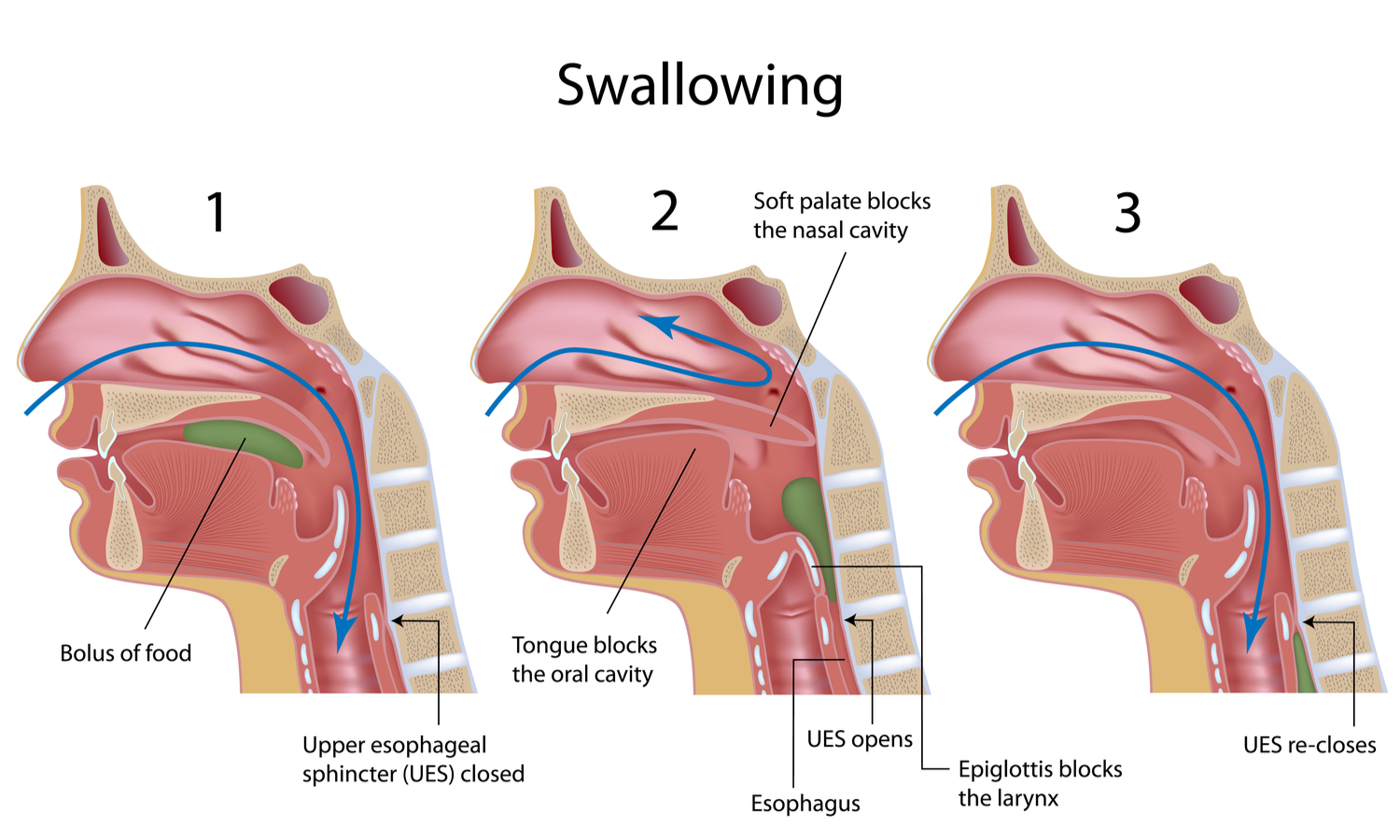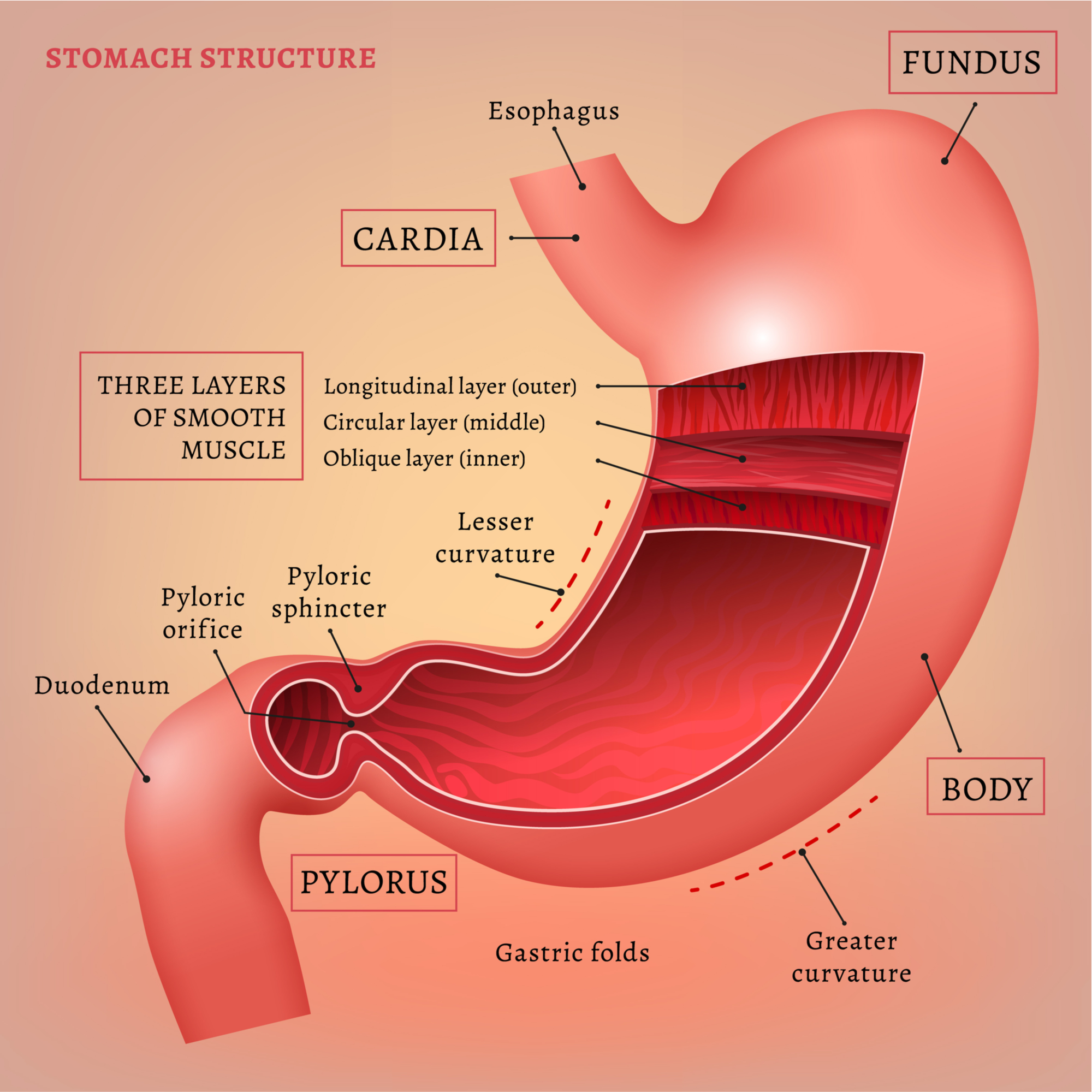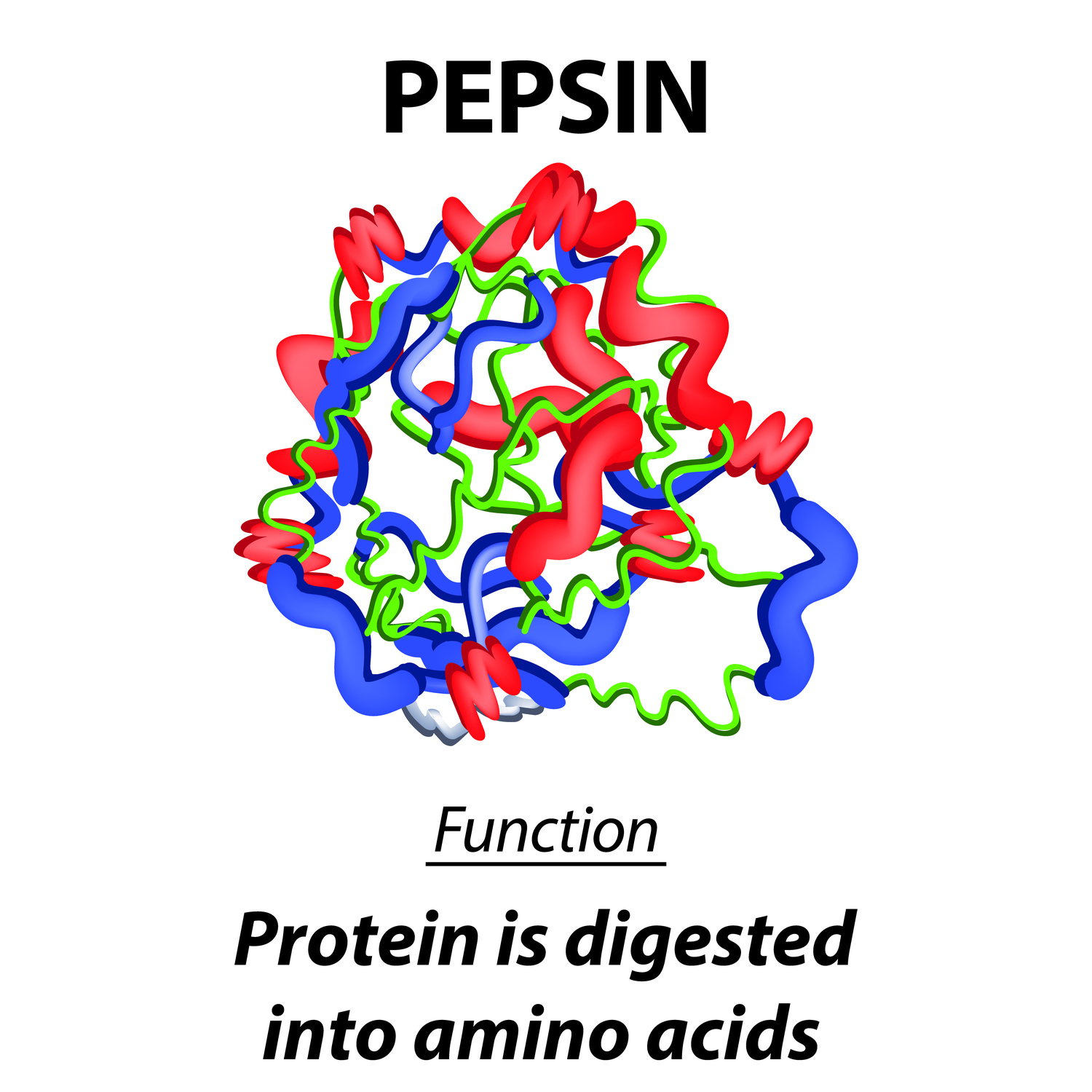
Upper G.I.T.

Upper G.I.T. Objectives
-
Describe the basic functions of the salivary glands, esophagus, and zones of the stomach.
-
Provide detail on types of teeth and general tooth anatomy, including enamel, cementum, dentin, and pulp.
-
Explain the significance of digestive chemicals like amylase, pepsin, and hydrochloric acid.
We are starting with an overview of the upper gastrointestinal organs, starting with the mouth and moving through the esophagus to the stomach.
This video provides an overview of our adult teeth.
Which teeth are “missing” from this model, possibly because they have not grown in yet?
answer: the third set of molars, often called “wisdom teeth.”
All of our teeth have the same basic anatomical components. This video introduces the parts of a tooth.

Enamel: the hard mineralized and exposed surface of the tooth.
Cementum (not in this illustration): the outer lining of the tooth within the gums.
Dentin: the bulk of a tooth, includes minerals, soft tissue, and water.
Pulp: contains blood vessels that feed cells and nerves for sensation. Pulp within the root of a tooth is often referred to as the root canal.
Often dental x-rays are used to show the location or condition of teeth.
The pulp of a tooth is full of blood vessels, but they can fall apart when a tooth is sectioned. This shows how abundant they are in the root of a tooth.

Processes that seem simple, like swallowing and breathing, require numerous structures so the two processes are not mistakenly inverted.

The stomach has zones with specific functions related to digestion. For example, the Cardia contains the valve that opens and closes between the esophagus from the stomach.
In the next video, try to distinguish between the primary roles of the stomach’s fundus, body, and pylorus regions.
Starting in the Buccal (mouth) cavity, amylase begins to break starch into glucose. We demonstrated the presence of starch in the previous section, this video demonstrates the addition of a form of amylase into a starch and water solution.

The stomach produces the enzyme pepsin and hydrochloric acid (HCl). Both work together to break down proteins into amino acids. The pepsin and acid get assistance in breaking down proteins from additional enzymes in the small intestine. We made a demo video of this protein breakdown process, but the color change was minimal. If you want to see what happened, the video is on the additional resources page.
The next section moves into the lower G.I.T., including the small intestine and its accessory organs, the large intestine, and rectum.

Check your knowledge. Can you:
-
describe the basic functions of the salivary glands, esophagus, and zones of the stomach?
-
provide detail on types of teeth and general tooth anatomy, including enamel, cementum, dentin, and pulp?
-
explain the significance of digestive chemicals like amylase, pepsin, and hydrochloric acid?






